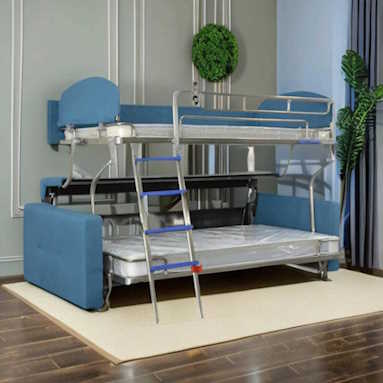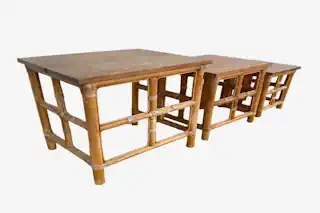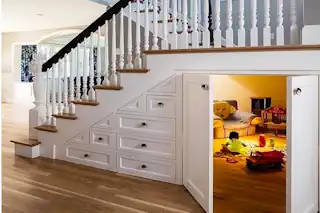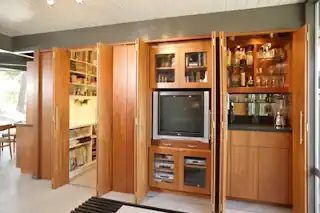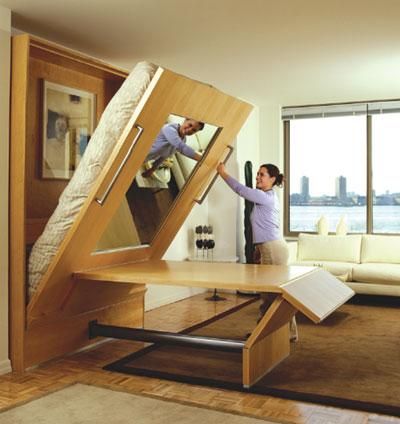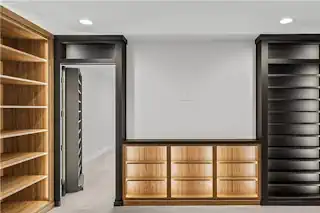Discovering the World of Hidden Drawers: A Guide to Clever Storage Solutions
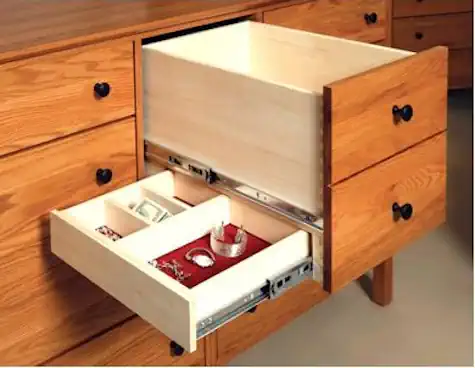
When it comes to making the most of your living space, every inch counts. That’s where hidden drawers come in – these clever storage solutions have been around for centuries, but they’re more relevant than ever in modern homes. Today, we’ll dive into the fascinating world of hidden drawers, exploring their history, different types, and how they can enhance your home’s functionality and aesthetic appeal.
A Brief History of Hidden Drawers
Hidden drawers have been a staple in furniture design for hundreds of years. From ancient Chinese furniture to Victorian-era desks, craftsmen have long recognized the value of incorporating secret compartments into their pieces. These concealed spaces served various purposes, from safeguarding valuable items to simply adding an element of surprise and intrigue.
In recent years, hidden drawers have experienced a resurgence in popularity, as homeowners and interior designers alike seek out innovative ways to maximize storage and add unique features to their living spaces.
Types of Hidden Drawers
There are several types of hidden drawers, each with its own distinct characteristics and benefits. Let’s take a closer look at some of the most common varieties:
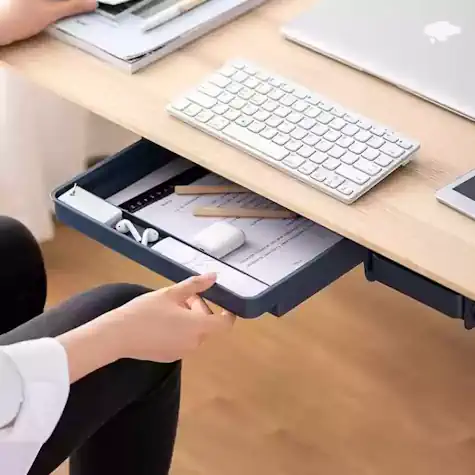
Under-Stair Drawers: These ingenious storage spaces make use of the often-overlooked area beneath staircases. Perfect for storing shoes, tools, or seasonal decorations, under-stair drawers keep your items neatly out of sight yet easily accessible.
Toe-Kick Drawers: Located at the base of cabinets, toe-kick drawers offer a discreet storage solution for kitchen essentials, cleaning supplies, or even pet food. Their seamless integration keeps them hidden in plain sight.
Floating Shelf Drawers: Combining the elegance of floating shelves with the practicality of storage, these drawers provide a space-saving solution for books, jewelry, or small keepsakes.
Secret Compartment Drawers: Often found in desks, nightstands, or bookcases, these drawers boast a hidden mechanism or lock that keeps precious belongings safe and private.
Pull-Out Cabinet Drawers: Ideal for kitchens and bathrooms, pull-out drawers transform cabinets from cluttered catch-alls to organized storage spaces, making every inch count.
Behind-Panel Drawers: These drawers are cleverly concealed behind wall panels or artworks, offering a virtually invisible option for storing valuables or infrequently used items.
Each type of hidden drawer not only adds an element of surprise to your home but also caters to a range of storage needs, helping to create a tidy and functional living space.
Traditional Concealed Drawers
These drawers are built seamlessly into furniture pieces, often blending in with the surrounding design elements. They may be accessed by a side door, a hidden latch, a specific sequence of movements, or even a magnetic key. Traditional concealed drawers are perfect for storing valuable items or creating a clean, uncluttered appearance in your home.
Secret Compartment Drawers
Taking the concept of concealment a step further, secret compartment drawers are designed to be hidden in plain sight. These drawers may be disguised as decorative elements, such as moldings or trim, or even integrated into unexpected places like stair risers or baseboards. Secret or hidden compartment drawers add an extra layer of security and privacy to your storage solutions.
Top 5 Items Typically Hidden in Secret Compartment Drawers
Secret compartment drawers are not just about the added storage; they’re about keeping certain items safe, private, and sometimes a bit secret. Here’s a look at what people commonly tuck away in these hidden nooks:
Jewelry and Heirlooms: Precious gems, family heirlooms, and sentimental pieces of jewelry often find a secure home in these secret spaces, safeguarded from prying eyes.
Important Documents: Whether it’s a birth certificate, a will, or a passport, keeping important documents in a hidden drawer can give you peace of mind knowing they are both safe and accessible.
Spare Keys: For that extra layer of security, spare keys to your home, car, or safe can be discreetly kept away from the usual key hooks or bowls, making them harder for the wrong hands to find.
Valuables and Collectibles: Small collectibles, rare coins, or any other valuables that hold significant worth are perfect candidates for secret compartment storage, ensuring both their safety and preservation.
Personal Protection Items: Some may choose to store personal protection items, like pepper spray or a compact self-defense tool, in a hidden drawer for quick access in an emergency, yet out of reach from children or guests.
Utilizing secret compartment drawers for these items adds not only an extra level of security but also a touch of mystery and intrigue to your living spaces.
Functional Design Features
Some hidden drawers serve specific purposes beyond general storage. For example, you might find hidden jewelry drawers built into a vanity or nightstand, allowing you to keep your accessories organized and easily accessible. Other functional hidden drawers might include charging stations for electronic devices or pull-out trays for keyboards in a home office setting.
Advantages of Hidden Drawers
Incorporating hidden drawers into your home design offers several key benefits:
Space-Saving Solutions
In smaller living spaces, every square foot is precious. Hidden drawers allow you to make the most of your available space by utilizing areas that might otherwise go unused. By tucking storage solutions into unexpected places, you can keep your living area clutter-free and organized.
Enhanced Security and Privacy
Hidden drawers provide an extra level of security for your valuable or sensitive items. Whether you’re looking to store important documents, sentimental keepsakes, or even just your personal journal, a hidden drawer ensures that your belongings are kept safe and private.
Aesthetic Appeal and Element of Surprise
Beyond their practical benefits, hidden drawers add a touch of charm and intrigue to your home. Guests will be delighted to discover secret compartments within your furniture, and you’ll enjoy the satisfaction of knowing that your living space holds a few surprises underneath.
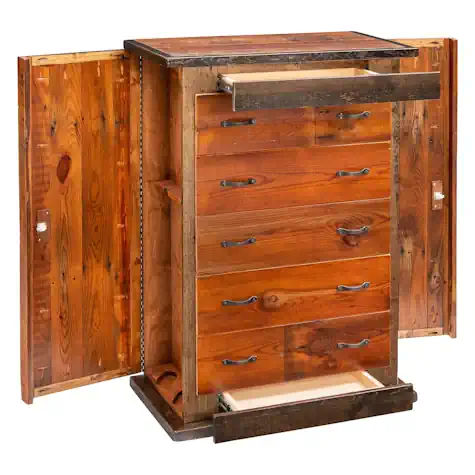
Top 5 Mechanisms for Opening and Closing Hidden Drawers
Hidden drawers not only serve the purpose of concealing valuables and decluttering the space but also intrigue with their clever mechanisms for access. Here are the top 5 mechanisms that add an element of finesse and functionality to these covert storage spaces:
Push-to-Open Latches: These are marvelously simple, requiring only gently pushing on the drawer front to release the catch and allow the drawer to glide open. A nudge in the reverse direction secures it back into its hidden position.
Magnetic Keys: A more secure option, magnetic keys can be used to unlock hidden compartments. The drawer remains locked and invisible to those unaware of its existence until the magnetic key is placed in the right spot, releasing the catch.
Touch-Activated Illumination: Some drawers come equipped with a touch-sensitive light that, when tapped, illuminates to reveal the drawer’s handle or opening mechanism. This not only makes access easier in low light but also adds an element of high-tech sophistication.
Hidden Pulls: These are discreetly integrated into the design of the furniture, such as along the edge of a panel or underneath a shelf, requiring knowledge of their exact location and a precise pull to access the hidden compartment.
Voice or Biometric Activation: For the ultimate in personal security and convenience, some high-end hidden drawers now feature voice recognition or biometric scanning (like a fingerprint reader). This ensures that only authorized individuals can access the drawer’s contents, providing peace of mind and an extra layer of security.
Each of these mechanisms offers a unique blend of aesthetics and security, ensuring that your hidden drawers are as much about functionality as they are about adding a personal touch to your home’s design.
How to Incorporate Hidden Drawers in Home Design
If you’re interested in adding hidden drawers to your home, there are a few key considerations to keep in mind:
Choosing the Right Furniture Pieces
When shopping for furniture, keep an eye out for pieces that incorporate hidden drawers. Many furniture retailers now offer options with built-in secret compartments, from coffee tables and ottomans to bookshelves and armoires.
DIY Options for Adding Hidden Drawers
If you’re feeling crafty, you can also consider adding hidden drawers to your existing furniture. With a few basic tools and some creativity, you can transform an ordinary dresser or cabinet into a piece with secret storage compartments. There are plenty of online tutorials and resources available to guide you through the process.
Top 5 DIY Approaches for Adding Hidden Drawers to Existing Furniture
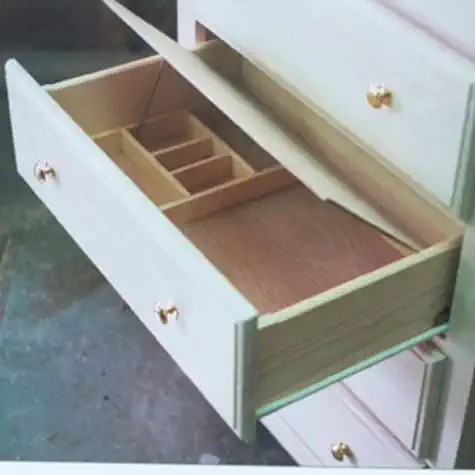
Adding hidden drawers to your existing furniture is a great way to introduce more storage and intrigue into your home. Here are the top 5 DIY approaches to get you started:
Repurpose Old Drawers: Utilize the interior space of larger furniture pieces by adding hidden compartments. This can be achieved by sectioning off part of an existing drawer into a smaller, secret compartment or by creating a false bottom in drawers for concealed storage.
Under-Shelf Drawers: Transform the unused space under shelves or cabinets into sliding drawers. These are ideal for keeping items out of sight, yet they remain easily accessible. This method is particularly effective in kitchen and bathroom cabinets, where space is often at a premium.
Floating Shelf with a Secret: Build or modify a floating shelf to include a drop-down compartment or a sliding panel. This approach keeps items hidden in plain sight and works well for storing keys, small notebooks, or even a secret stash of sweets.
Stair Tread Storage: If you’re handy with tools and have a set of stairs, consider creating a drawer in one of the steps. This is a perfect spot for keeping shoes, winter gear, or tools tidily tucked away. It’s also a great conversation starter!
Behind-The-Panel Secret Compartments: Create a concealed compartment behind a removable panel or piece of artwork on the wall. This approach can be used in any room and is ideal for storing valuables, emergency cash, or personal documents. It combines security with accessibility, and the camouflage can be as creative as you like.
Each of these DIY projects offers a unique blend of functionality and secrecy, allowing you to make the most of your living space while adding an element of fun to your home design. Incorporating into the frame of a wall can make hidden compartments extremely secure.
The Future of Hidden Drawers
As technology advances and design trends evolve, we can expect to see even more innovative applications of hidden drawers in home design. From smart furniture with built-in wireless charging to modular systems that allow for customizable secret compartments, the possibilities are endless.
Embrace the Magic of Hidden Drawers in Your Home
Hidden drawers offer a unique blend of functionality, security, and aesthetic appeal, making them a valuable addition to any home. By incorporating these clever storage solutions into your living space, you can enjoy a more organized, efficient, and visually stunning environment.
So, whether you’re in the market for new furniture or looking to upgrade your existing pieces, keep an eye out for hidden drawer options. Happy hiding!
Frequently Asked Questions (FAQs)
Can a hidden drawer be added to any piece of furniture?
Absolutely! With a bit of creativity and some basic DIY skills, hidden drawers can be added to almost any furniture piece. The key is to identify unused spaces that could be transformed into secret storage areas. A lower drawer or bottom drawer will often have space beneath it that can be easily made into a hidden compartment.
Are hidden drawers expensive to install?
The cost can vary depending on whether you opt for a DIY approach or choose furniture that comes with built-in hidden drawers. DIY projects can be quite cost-effective, especially if you repurpose materials you already have. Purchasing new furniture with hidden compartments may be more costly but offers a polished look with less effort.
How do I choose the right place for a secret drawer?
Think about what you’ll be storing and which rooms you spend the most time in. For valuables or personal items, consider locations that are less obvious to guests. For everyday items, choose a spot that’s convenient yet discreet.
Can hidden drawers affect the resale value of furniture or my home?
In many cases, hidden drawers can actually increase the value of a piece of furniture or even your home by adding a unique feature and extra storage space. They’re often seen as a luxury addition that adds character and functionality.
Is it necessary to have a lot of tools or carpentry skills to add hidden drawers?
Not necessarily. Many simple hidden drawer projects can be completed with just a few basic tools, like a drill and screwdriver. There are numerous resources and tutorials available that cater to different skill levels, making it accessible for beginners as well as more experienced DIYers.
Will adding a secret drawer damage my existing furniture or home structure?
If done carefully and correctly, adding hidden drawers should not damage your furniture or home. It’s important to plan your project thoroughly and follow instructions closely. If you’re unsure, it might be worth consulting a professional before you begin.
Are hidden drawers safe for storing valuable items?
When designed well, hidden drawers and boxes can offer an extra layer of security for valuables. However, for high-value items or important documents, you might also consider additional security measures, such as locks or even using hidden drawers in conjunction with a safe.
